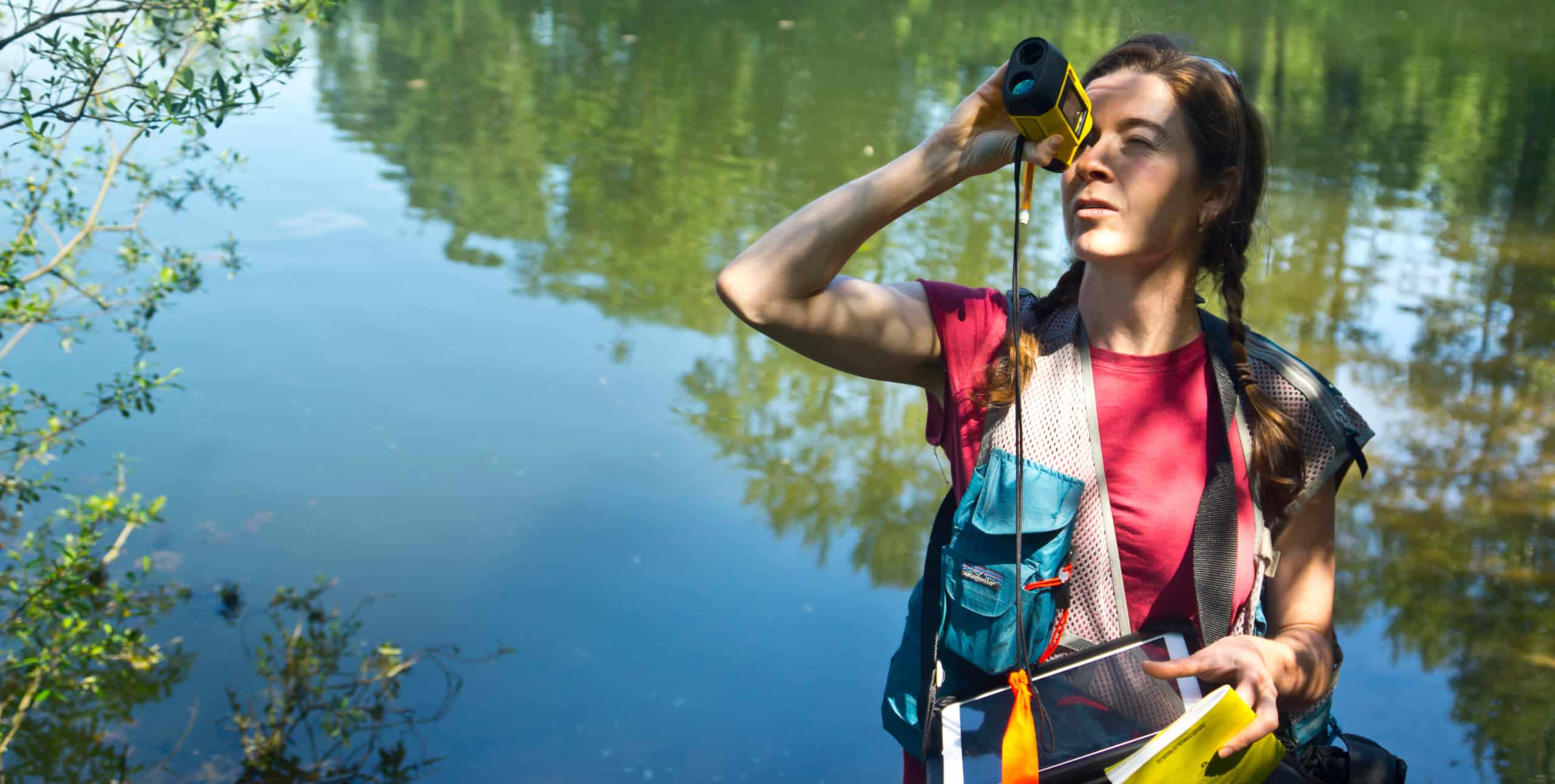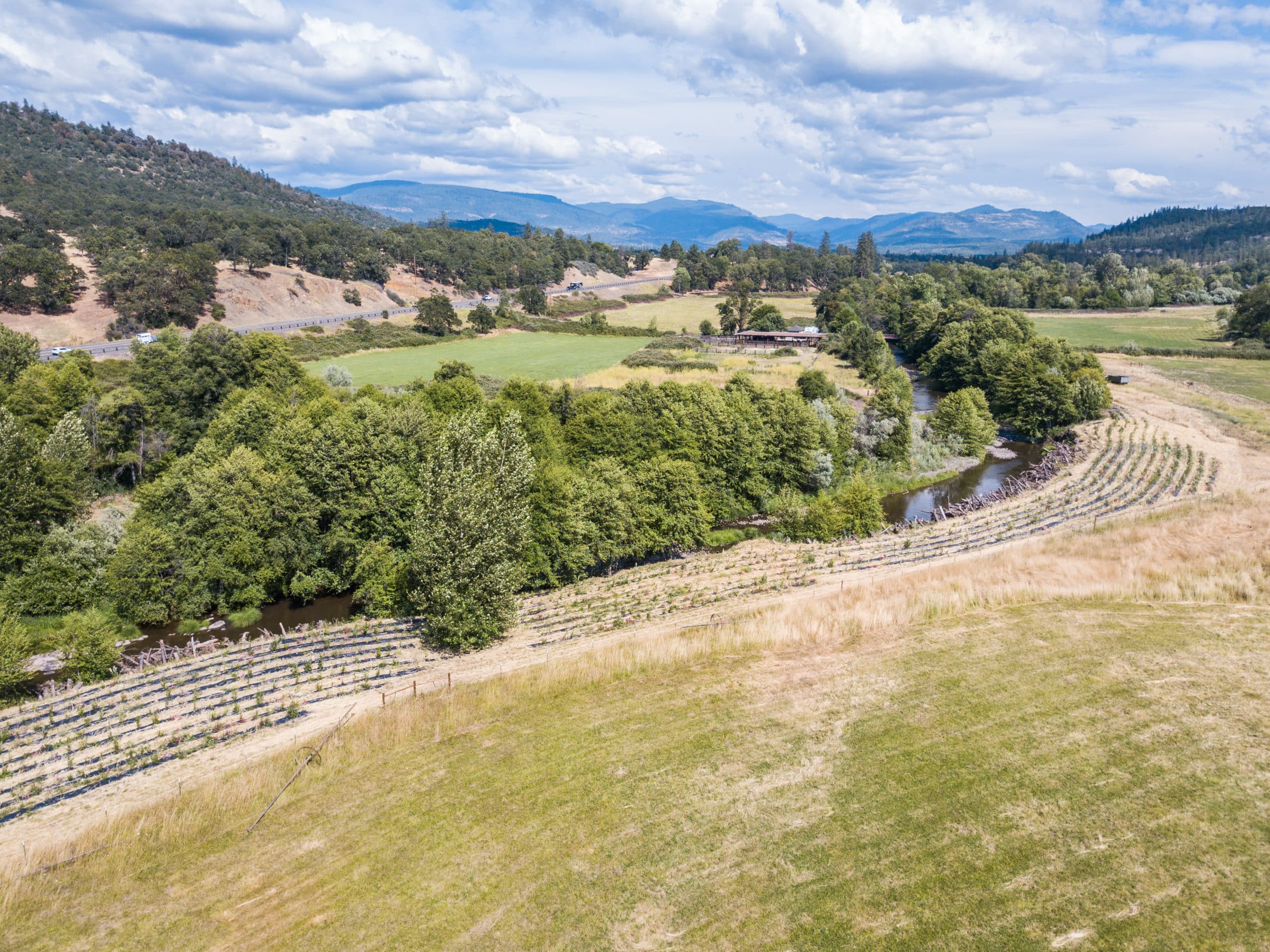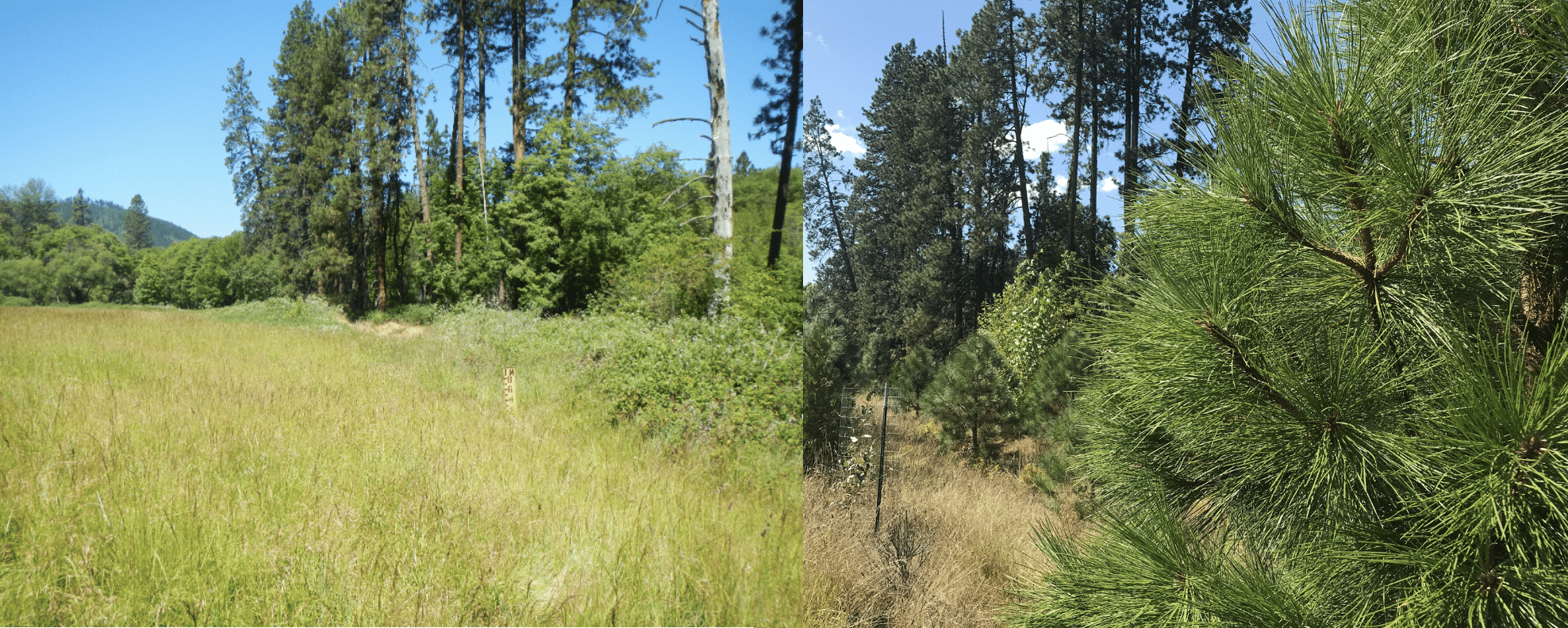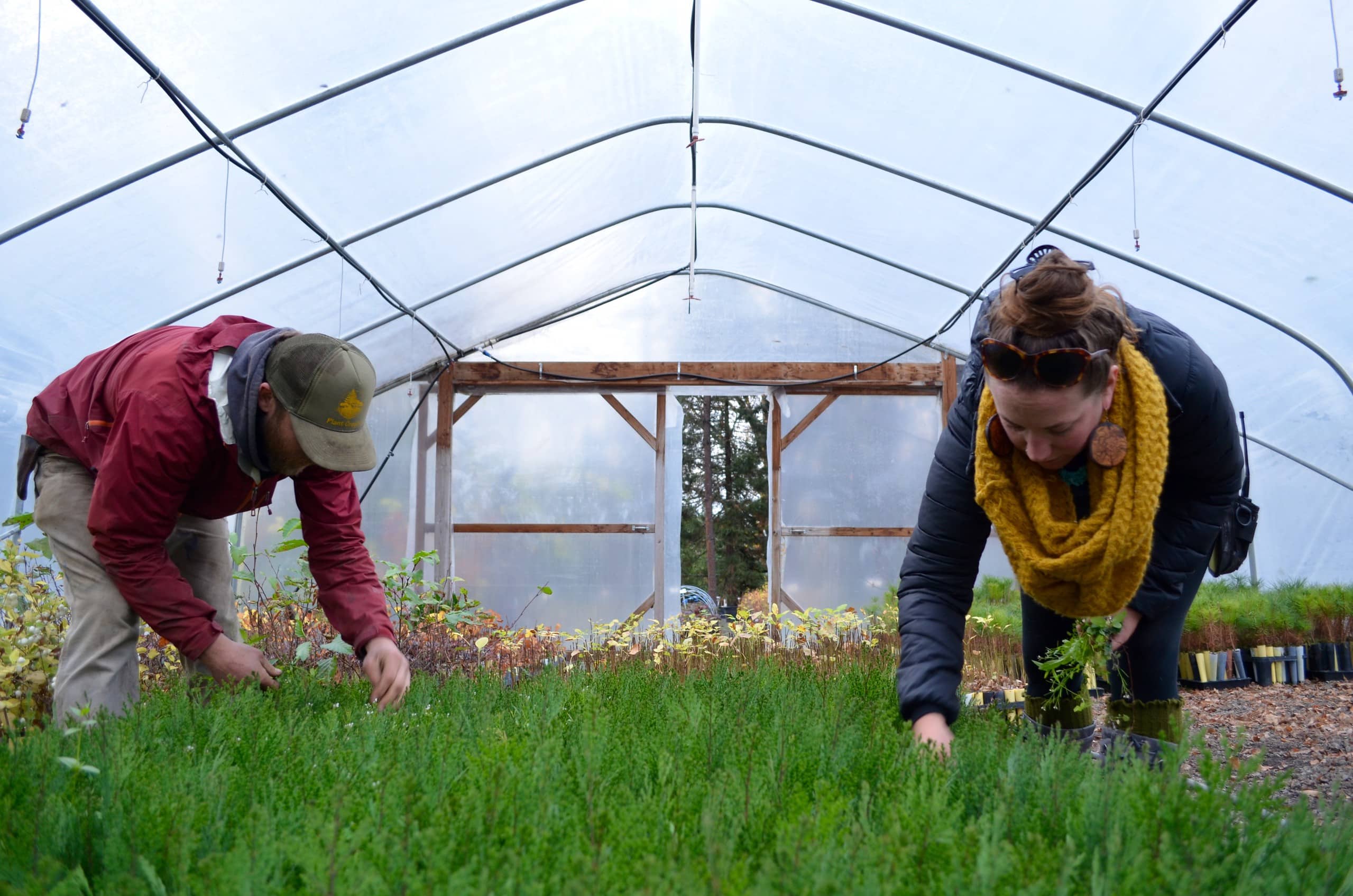Monitoring Season Not Cancelled
Olivia Duren’s job requires resilience.
“There are rattlesnakes,” said Duren. “The blackberry bushes will shred your toughest work pants. There’s smoke in the air. Oh, and the wasps, bees and hornets are usually angry.”
Olivia is an ecologist and full-time employee in The Freshwater Trust’s (TFT’s) monitoring department. She’s set to begin her seventh season of field work next month.

Olivia Duren, restoration ecologist with The Freshwater Trust
When she started in 2013, there were five revegetation projects to monitor. Last year, there were 27.
Monitoring is a critical part of TFT’s restoration cycle. The organization employs five full-time staff and five part-time, seasonal positions that contribute to monitoring.
“The time and effort we spend monitoring are not common,” said Duren. “Many restoration projects are funded by grants, and the single goal for those grants is getting the work done and getting it on the landscape. There’s rarely funding or time allocated for making sure those projects are succeeding long term, much less quantifying the impacts of them.”
The revegetation projects Olivia monitors for TFT are implemented for compliance. Contracts are signed with entities that have compliance or mitigation obligations, such as a municipal wastewater treatment facility, to offset the impacts of their operations through restoration or conservation actions. For this reason, they are closely monitored to ensure intended outcomes.
“They need to stand up to a lot of scrutiny,” said Duren. “We have set, defined benchmarks that translate to positive ecological impact, and we are going out there year after year and specifically assessing if the projects meet them.”
TFT manages more than two dozen revegetation projects in Oregon, where native trees and shrubs have been planted along a streamside that had once been overtaken by invasive species or been mowed over for farmland. The new plants will grow to shade the water, keeping it cool for native fish species, filtering runoff, and ensuring wastewater treatment facilities and other entities are in compliance with the Clean Water Act (CWA).

One of The Freshwater Trust's large scale restoration projects in the Rogue basin
Between May and September, Olivia and other TFT full-time and seasonal staff travel across the state to assess the health of the projects and collect critical data, quantifying and verifying impact.
“We are giving them more than a once over,” said Duren. “We spend days monitoring a site and go above and beyond to make sure that the data we gather while we are out here is robust, transparent and defensible. Pretty much nothing we do at TFT is a waste of time. And we continually try to learn from the results, to always improve. In fact, we’ve been able to layer on field trials to some projects and collect research data at the same time as we monitor.”
Tree canopy and height are measured, along with development of native shrubs and herbs in the understory, and species composition to make sure that young forests are diverse and resilient. Cover of invasive species, signs of animal disturbance, and function of irrigation and other infrastructure are recorded to guide planning for management. All of these factors are measured at each project for 20 years, providing an unparalleled look into forest development across the state.
The data, including measurements and photos from the projects, are input into TFT’s Streambank Monitoring Application, a mobile-friendly platform that allows results to be easily analyzed and reported back.
“We used to do all of it by hand,” said Duren. “Now the tracking and collecting of data we have to do to ensure our projects are having an impact is much less tedious, and we get the results right away.”
Every year, new photos are taken in the same, key places throughout a restoration project. The result is a visual chronicle of how a project has changed over time.

The photo on the left was taken before the restoration project began. The photo on the right was taken six years later in the same place.
“It’s so satisfying,” said Duren. “These images are just one more way we prove that we are laser focused on results – and photos are an easy way to share that with everyone.”
Olivia and her team will be back for images and measurements this summer, despite the rattlesnakes, smoke, bees and now a pandemic. Because of the outdoor, dispersed nature of our work, neither TFT nor its local restoration partners fall into a category of businesses shut down by Oregon’s recent executive order. However, the organization and its subcontractors are closely tracking federal, state, and local laws related to the outbreak.
“It’s not just good news that we can continue monitoring, but that we can keep implementing projects as well,” said Duren. “Fixing rivers employs people and supports many small, rural businesses that need it.”

Inside one of Plant Oregon's greenhouses, a local nursery that supplies The Freshwater Trust with many plants for its restoration projects in southern Oregon
To ensure the best, most adapted plants are used, thousands of dollars in native trees and shrubs are purchased from local nurseries throughout Oregon to implement projects like these. These forests are meant to last, and investing in high-quality plant material is worth it to put a tree in the ground that will be around for hundreds of years.
“Our projects are designed to be resilient in the face of adversity,” said Duren. “By continuing our work, local economies can be, too.”
Restoration in the time of COVID-19
TFT and its subcontractors are closely tracking all federal, state, and local laws and orders pertaining to the protection of human health and safety during the COVID-19 outbreak. With respect to Oregon restoration projects, because of the outdoor, dispersed nature of our work, neither TFT nor its local restoration partners fall into a category of businesses shut down by Oregon’s recent executive order. Our subcontractors are a vital aspect of the outdoor and watershed health restoration economies across the state, and we will continue to implement on-the-ground projects for as long as permitted. While doing so, all employees and partners are complying with social distancing practices and guidelines to ensure the health and well-being of all involved. The rest of TFT’s work is capable of being done remotely. Non-field staff in Oregon, Idaho and California are working remotely, and our offices will remain closed for the foreseeable future.
April 7, 2020
#habitat monitoring #monitoring #planting trees #StreamBank Monitoring App
Enjoying Streamside?
This is a space of insight and commentary on how people, business, data and technology shape and impact the world of water. Subscribe and stay up-to-date.
Subscribe- Year in Review: 2023 Highlights
By Ben Wyatt - Report: Leveraging Analytics & Funding for Restoration
By Joe Whitworth - Report: Transparency & Transformational Change
By Joe Whitworth - On-the-Ground Action – Made Possible By You
By Haley Walker - A Report Representing Momentum
By Joe Whitworth

